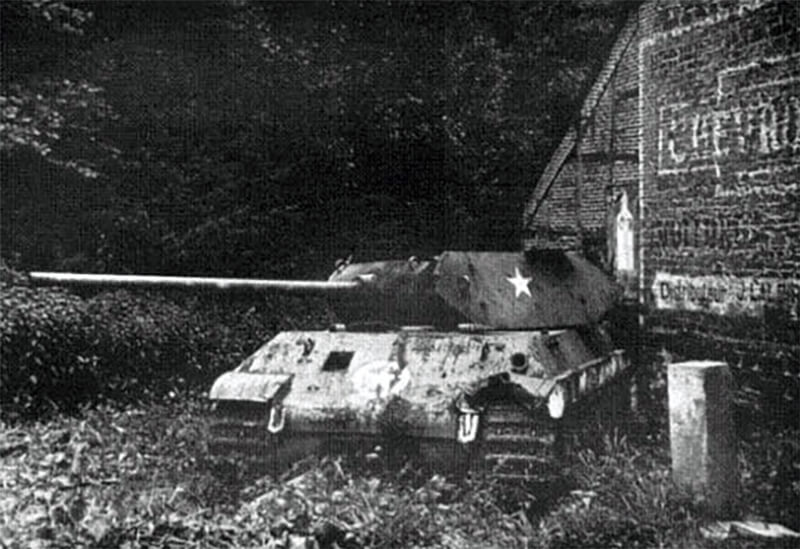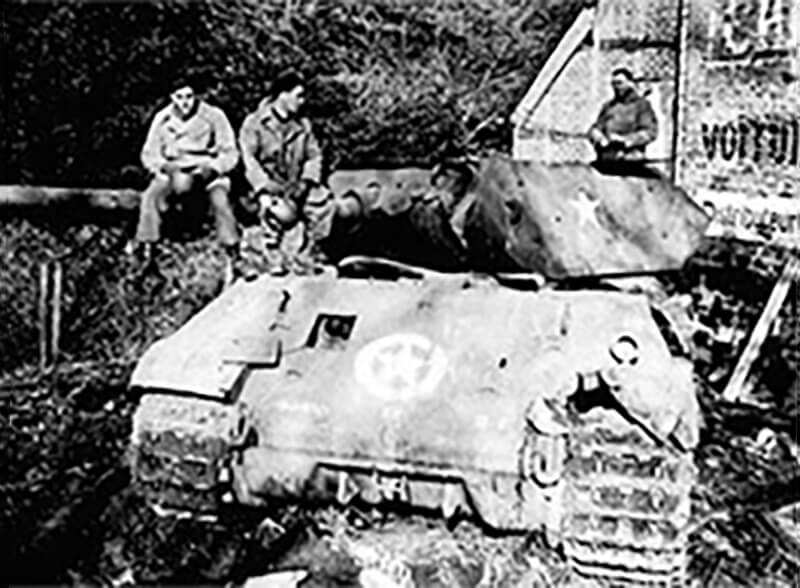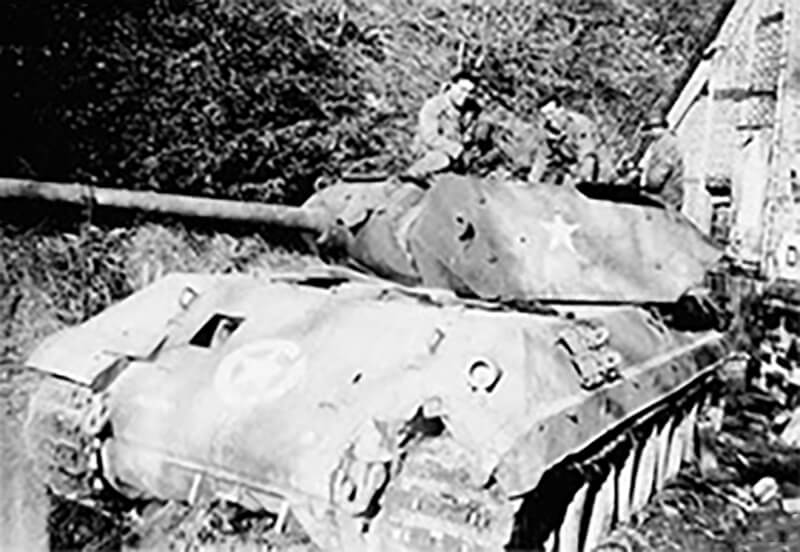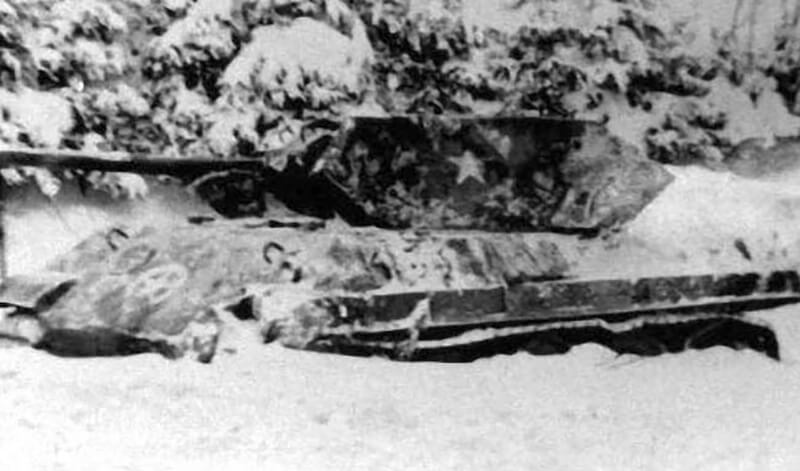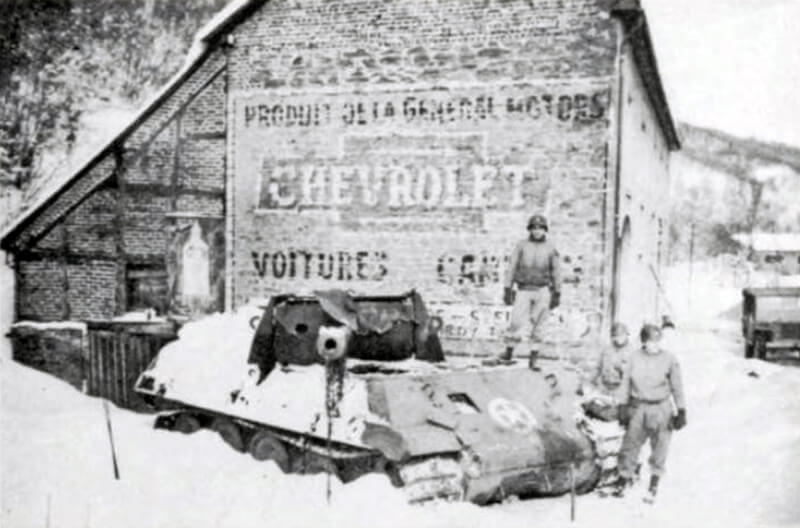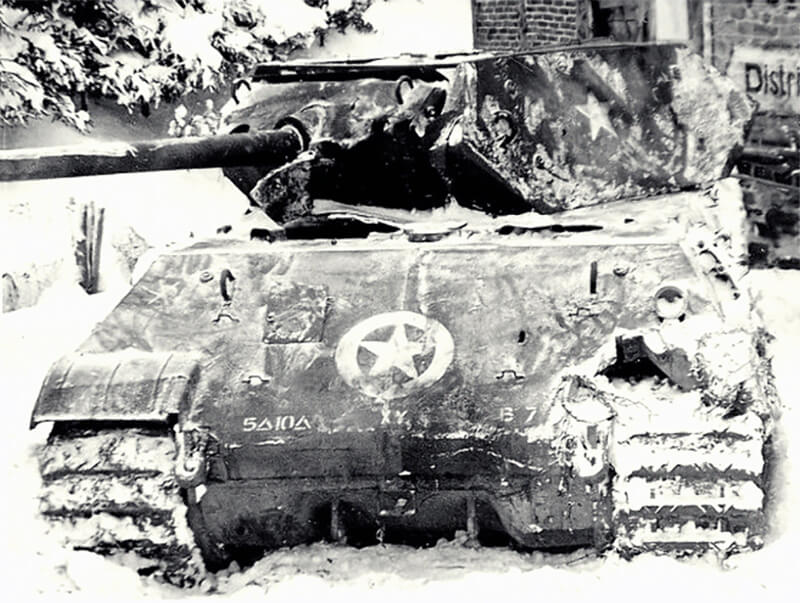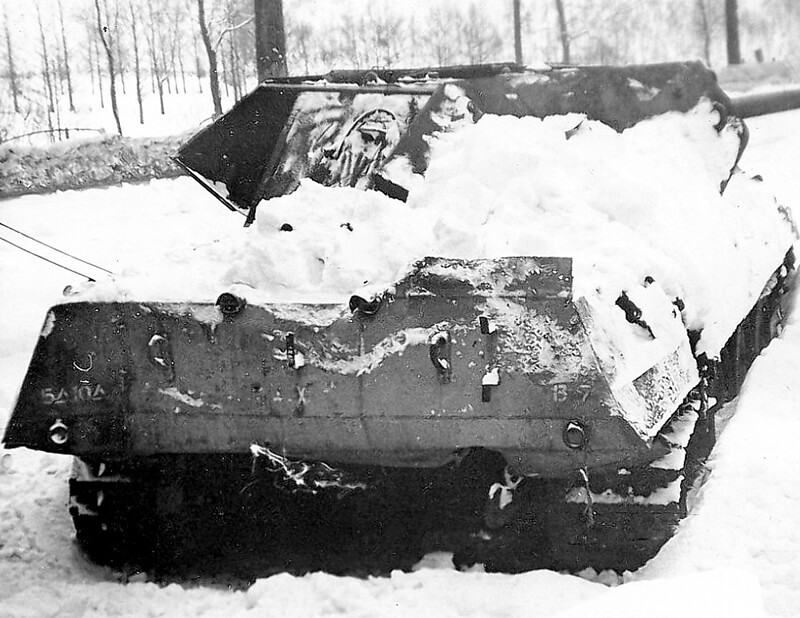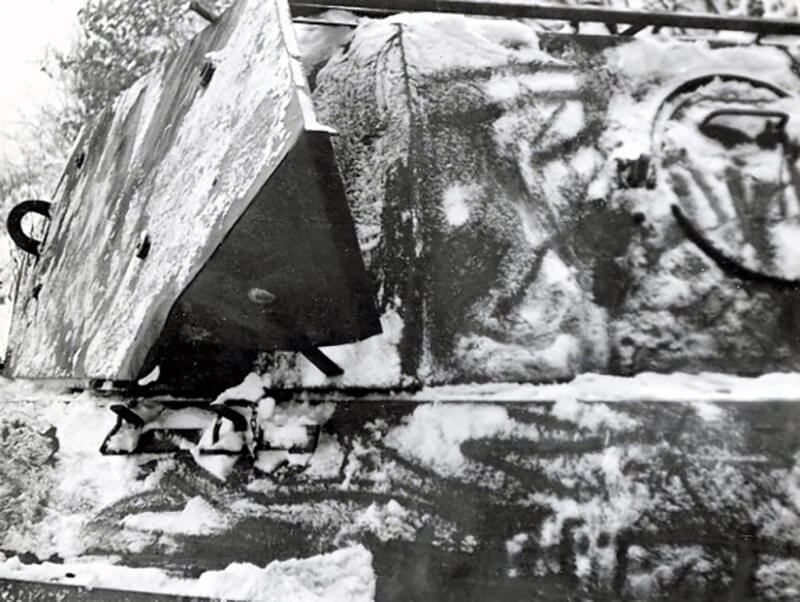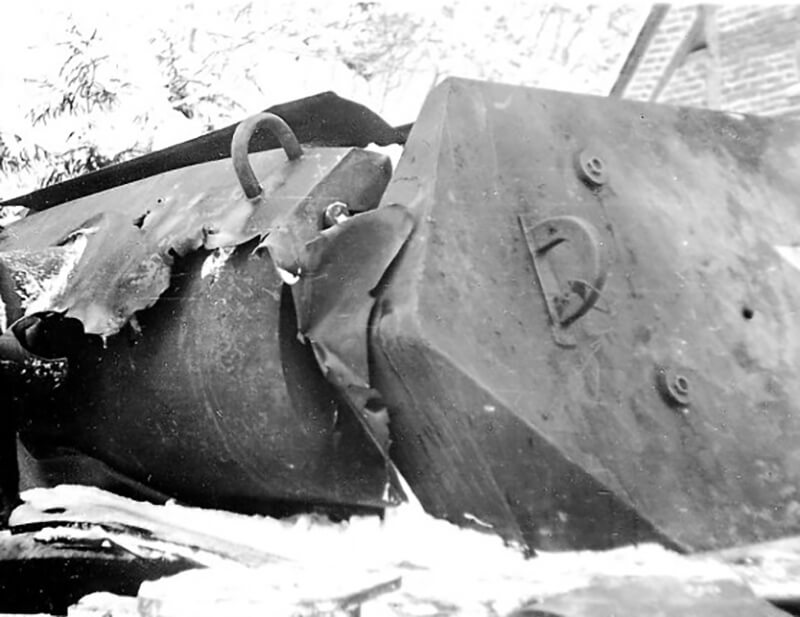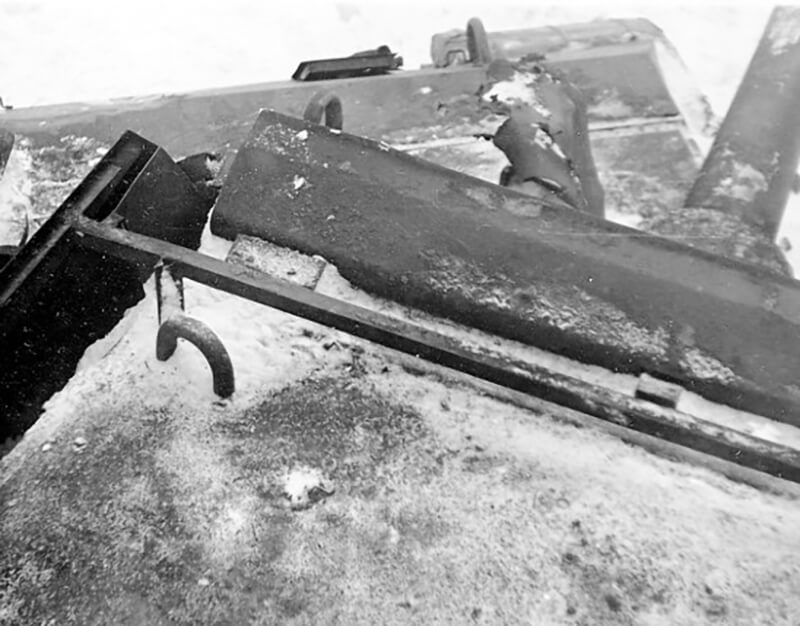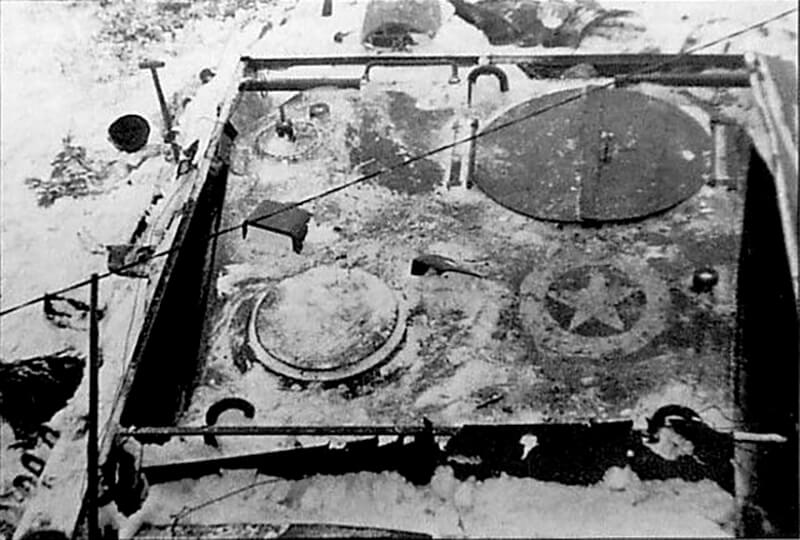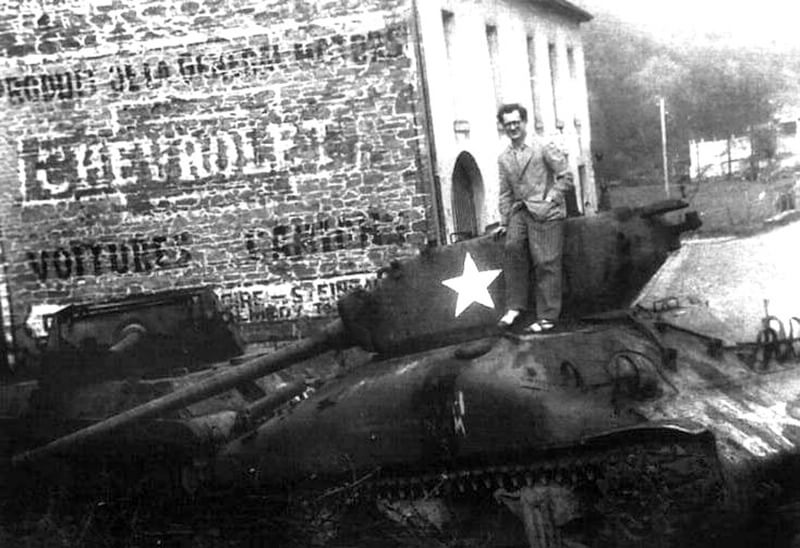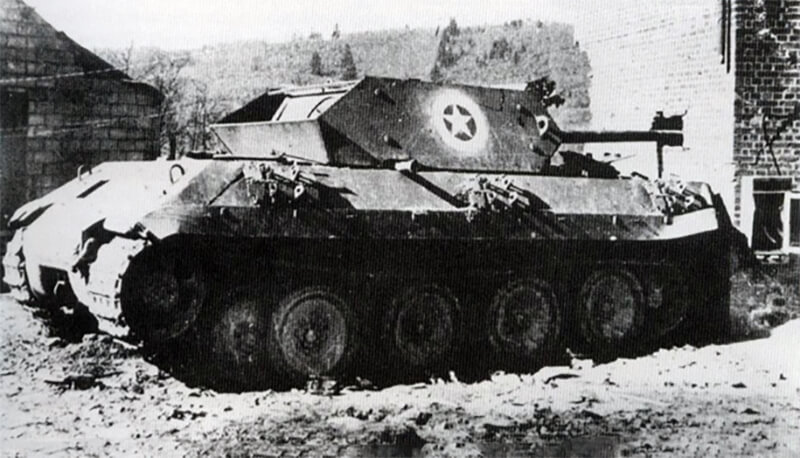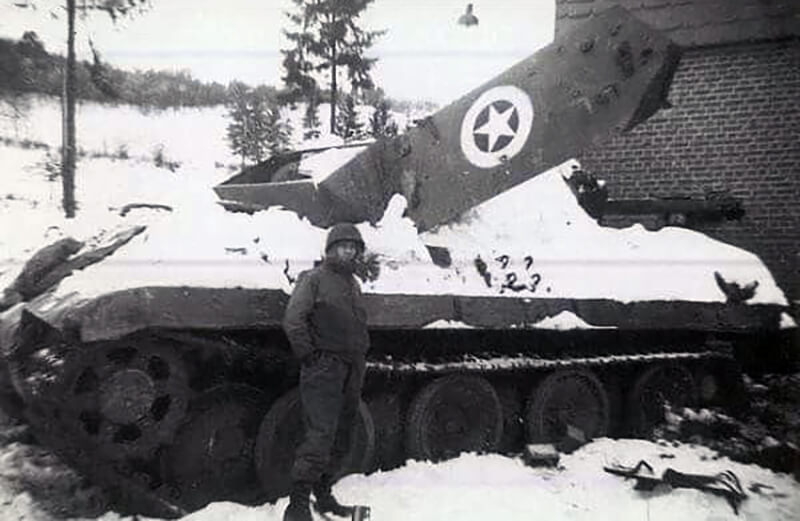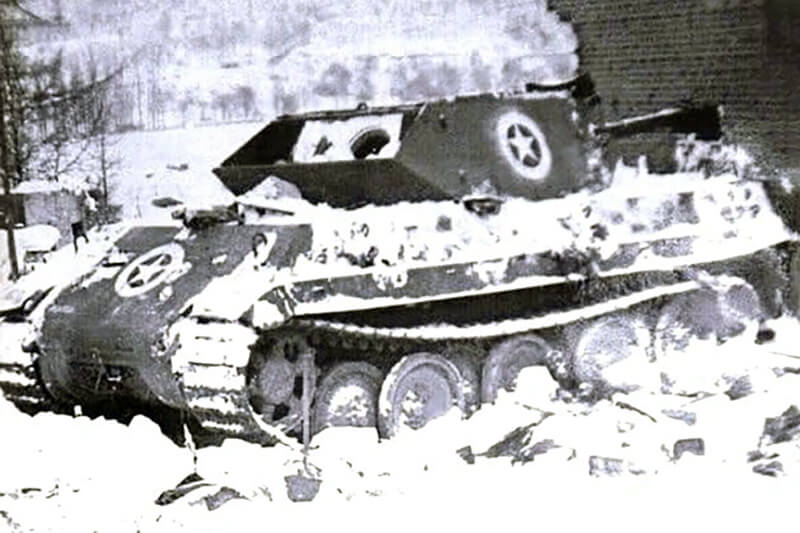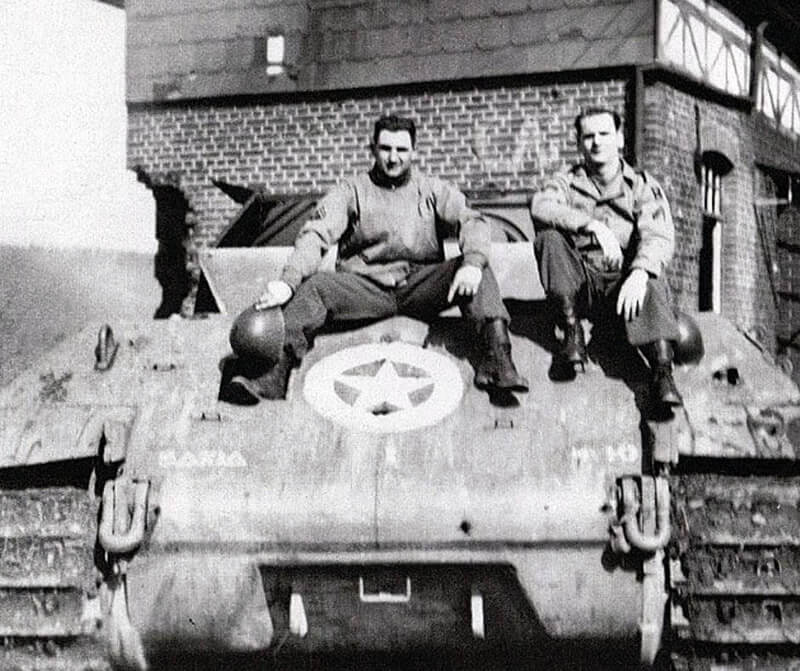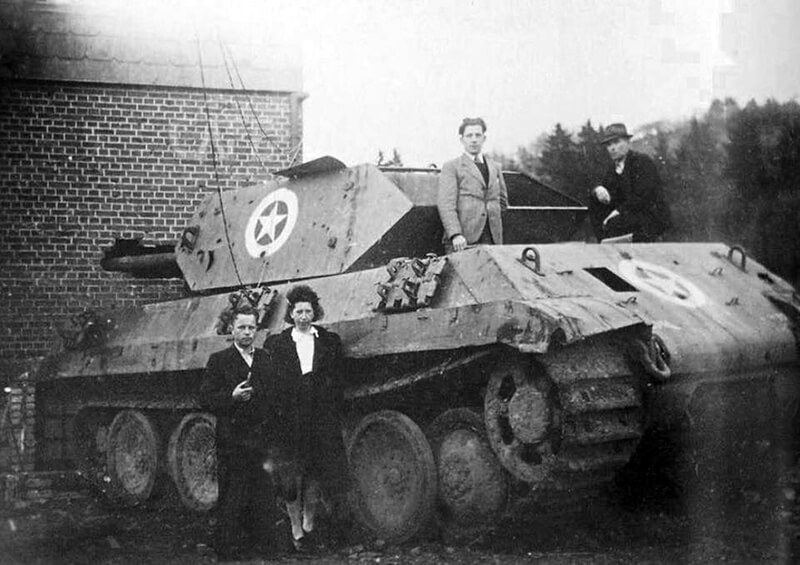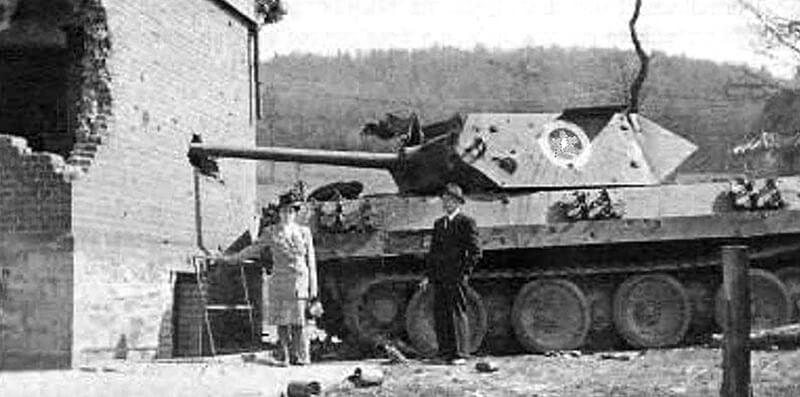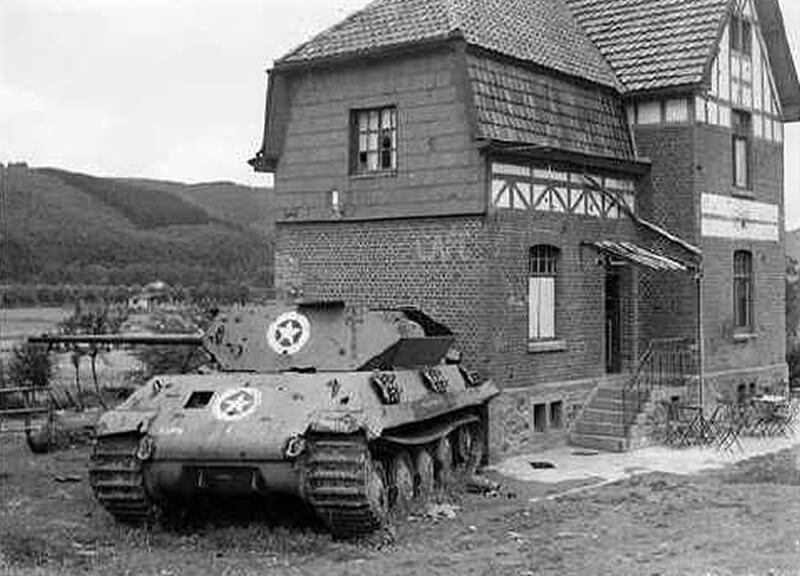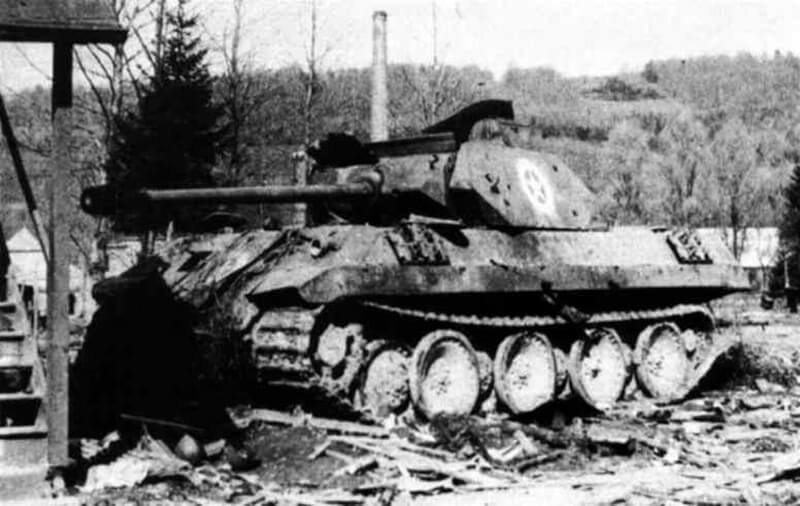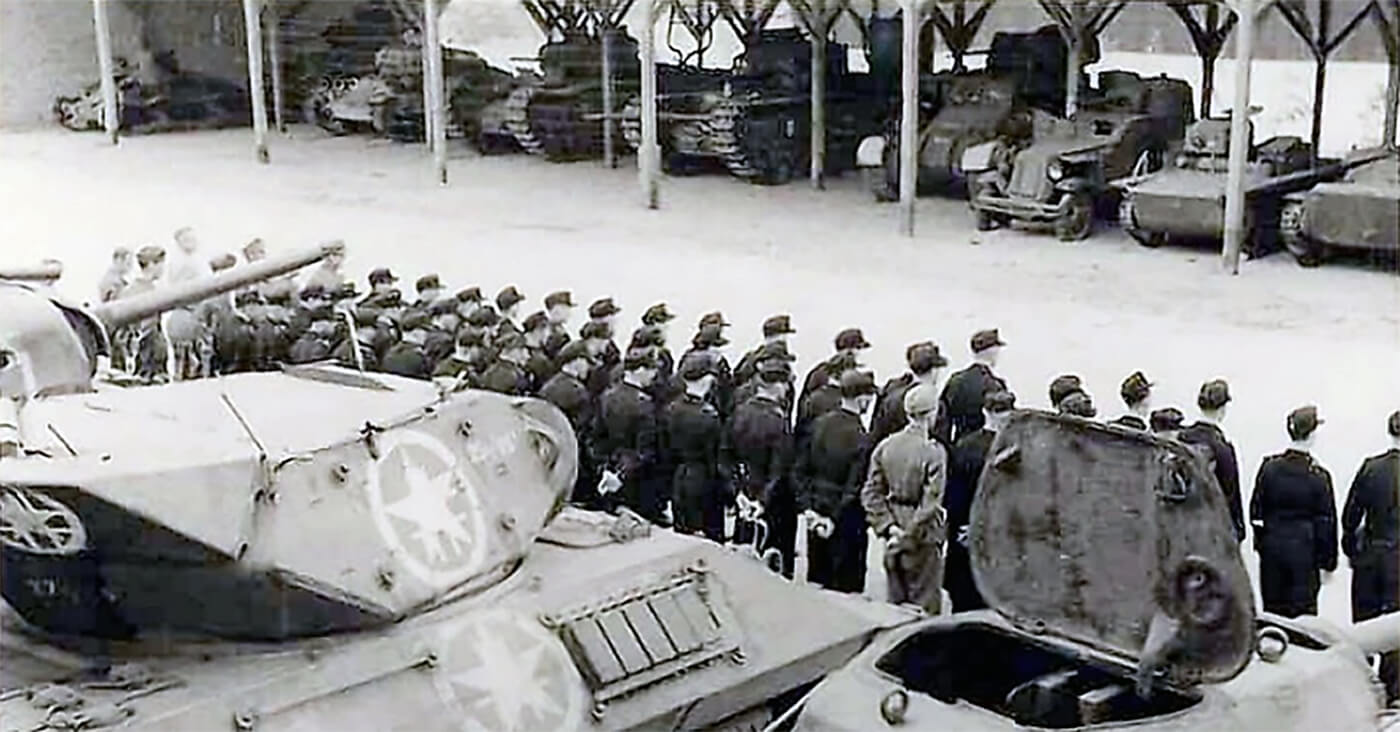| Page Created |
| April 10th, 2023 |
| Last Updated |
| August 28th, 2023 |
| Germany |
 |
| Special Forces |
| Einheit Stielau Panzer-Brigade 150 |
| December 1944 |
| Unternehmen Greif |
| Objectives |
- The seizure intact of at least two bridges across the Meuse by disguised raiding parties.
- The prompt reinforcement of any such coup de main by an armored commando formation.
- An organised attempt to create confusion in the Allied rear areas through sabotage carried out by jeep parties clad in American uniforms.
| Operational Area |
Malmédy Region, Belgium
| Unit Force |
Kampfgruppe Skorzeny
- Panzer-Brigade 150
- Brigade Stab
- Brigade Stab
- 14 men
- 26 men
- 22 men
- 62 men
- Nachschubzug
- 69 men
- Brigade Stab
- Kampfgruppe X (SS-Obersturmbannführer Willi Hardieck)
- Stab
- 10 men
- 3 x Infanterie Kompanien(Fallschirmjäger-Bataillon Schluckebier)
- 405 men
- 2 x Panzergrenadieren Kompanien
- 100 men
- 2 x Panzerabwehr Kompanien
- 60 men
- 2 x Schwere Granatwerfer Truppe
- 76 men
- Instandsetzungszug
- 25 men
- Nachrichtenabteilung
- 22 men
- Pionierabteilung
- 34 men
- Panzerabteilung
- 130 men
- 5 Ersatz Panthers
- 1 Sherman, American
- Stab
- Kampfgruppe Y (Hauptmann Walter Scherff)
- Stab
- 10 men
- 3 x Infanterie Kompanien
- 405 men
- 2 x Panzergrenadieren
- 100 men
- 2 x Panzerabwehr Kompanien
- 60 men
- 2 x Schwere Granatwerfer Truppe
- 76 men
- Instandsetzungszug
- 25 men
- Nachrichtenabteilung
- 22 men
- Pionierabteilung
- 34 men
- Panzerabteilung
- 130 men
- 5 Sturmgeschütz III G
- Stab
- Kampfgruppe Z (Oberstleutnant Hermann Wolf)
- Stab
- 10 men
- 3 x Infanterie Kompanien
- 405 men
- 2 x Panzergrenadier Kompanien
- 100 men
- 2 x Panzerabwehr Kompanien
- 60 men
- 2 x Schwere Granatwerfer Trupps
- 76 men
- Instandsetzungszug
- 25 men
- Nachrichtenabteilung
- 10 men
- PionierAbteilung
- 35 men
- Stab
- Einheit Stielau (Stielau)
- 24 Aufklärungskommandos
- 8 Funkkommandos
- 7 Pionierkommandos
| Opposing Forces |
United States
- 6th Infantry Division
- 3rd Battalion of the 20th Infantry Regiment
- 99th Infantry Battalion (separate)
- 30th Infantry Division
- 120th Infantry Regiment
- 291st Engineers Combat Battalion
| Unternehmen Greif |
| October 22nd, 1944 |
Hitler summons Skorzeny to meet him at his headquarters at Rastenburg in East Prussia to discuss the upcoming Ardennes Offensive and Skorzeny’s role in it. Hitler sees this as the decisive offensive and tasks Skorzeny with leading a panzer brigade to reach the Meuse River bridges and capture them intact.
Hitler explains that Skorzeny’s unit would play a significant role in this offensive. His mission was advancing to the forefront and capturing one or more of the bridges spanning the Meuse River between Liege and Namur. To achieve this, Hitler suggested his troops would wear British and American uniforms. Hitler informs Skorzeny that the Allied have inflicted serious damage to the Germans by utilising German uniforms in various commando operations. A few days before the meeting, a report had reached Hitler indicating that the deployment of German uniforms by an American force played a noteworthy role in their capture of Aachen, the first German town in the western region to be occupied by the Allied.
Hitler envisions that the utilisation of detachments dressed in enemy uniforms has the potential to sow significant confusion among the Allies. By issuing false orders and disrupting their communication channels, these units can lead Allied forces astray and divert troop movements in incorrect directions. Skorzeny is ordered that his preparations must reach completion no later than December 2nd, 1944. He is to coordinate all the intricate aspects of his unit and the operation with Generaloberst Alfred Jodl.
During the meeting, Hitler speaks in detail about the massive quantity of material that has been accumulated for the offensive. Later, Skorzeny recalls that Hitler mentions that they would have six thousand artillery pieces in the Ardennes, and in addition to that, the Luftwaffe would have around two thousand planes, including the new Strahl (ME-262) planes.
Skorzeny expresses his concerns about the task assigned to him, stating that if he is to do this in the given time, he would have to give up all his other work. Hitler agrees to this and promises to send some of the best officers to assist Skorzeny. Skorzeny is then sent to General Alfred Jodl CoS-OKW for further details about the plan and his role in the Winter Offensive.
The timing of the Ardennes Offensive means that Skorzeny has only five or six weeks to recruit and train a brand-new unit and an operation Hitler had named Operation Greif.
| October 25th, 1944 |
Within four days he sends his plans for Panzer-Brigade 150 and an English-speaking commando unit to Generaloberst Alfred Jodl. Despite asking for 3,300 men, he is given an immediate go-ahead and promised full support.
That very same day, the Oberkommando der Wehrmacht issues an order, requesting suitable soldiers for the operation with “knowledge of the English language and also the American dialect” which is passed on to every headquarters on the Western Front, and this request soon becomes known to the Allies. These men all serve in Einheit Stielau. Their primary objective is to cause chaos behind the US lines by misleading traffic and causing confusion.
Equipping the brigade required a variety of American-origin vehicles and equipment, including tanks, self-propelled tank destroyers, armored personnel carriers, trucks, jeeps, weapons, and uniforms. However, obtaining these items proves challenging for Skorzeny. The front-line units are reluctant to part with their valuable transport, making it difficult to acquire the necessary equipment.
| November 2nd, 1944 |
To address the equipment issue, Skorzeny writes to Generalleutnant Siegfried Westphall, the Chief-of-Staff of Oberbefehlshaber West. He highlights the fact that while the required equipment does exist, the troops might fail to hand it over because they are unaware of the purpose behind the requisition. Skorzeny wants to ensure that the necessary items are obtained.
| November 9th, 1944 |
Oberbefehlshaber West is requested to procure specific quantities of tanks, armored cars, self-propelled guns, jeeps, motorcycles, trucks, and both British and American uniforms. These requisitions, codenamed Rabenhügel, are divided between the three Army groups. Heeresgruppe G is responsible for eight tanks and twenty jeeps, Heeresgruppe H for two tanks and fifty jeeps, and Heeresgruppe B for five tanks and thirty jeeps. All these vehicles are to be promptly delivered to Grafenwöhr, the training camp location for the newly formed brigade.
| Mid November |
Skorzeny calls a meeting with his three group commanders and briefs them that they are anticipating against an American offensive somewhere in the Aachen sector. Skorzeny further informs them that their plan is to let the Americans penetrate their lines and then cut them off. During this time, their Brigade is to create a significant disturbance in the rear lines to assist in the annihilation of the enemy forces.
During that same period, a German prisoner of war confesses that he has seen a secret order calling for all English-speaking personnel and captured US uniforms to be sent to Osnabruck, Germany. The personnel would be trained in reconnaissance, sabotage, and espionage according to the order. Two German military documents captured at around the same time confirm the prisoner’s claims. The documents reveal that a call for volunteers has been issued in early November, outlining the necessary qualifications, including knowledge of English (with an American dialect), physical fitness, mental agility, competence in close combat, and suitability for special assignments. The volunteers are to be familiar with military terminology and cannot be retained by their units for military reasons. From the pool of volunteers, a special unit will be formed, consisting of about two battalions, for deployment on the Western Front.
| November 21st, 1944 |
Skorzeny, using his codename Solar, expresses his disappointment with the results of Rabenhügel in a telegram to Oberbefehlshaber West. He complains about the lack of American equipment arriving at Grafenwöhr. Despite the challenges and the limited availability of American equipment, Skorzeny continues to prepare the brigade for its mission.
| November 19th, 1944 |
Skorzeny’s unit receives a total of five Panthers.
| November 24th, 1944 |
Panzer-Brigade 150 receives five Sturmgeschütz (StuGs), and one armoured car (Pz.Späh.Wg.).
| November 27th, 1944 |
Six more medium armored personnel carriers are allocated to Rabenhügel.
An aide of Skorzeny sends a comprehensive report to Oberbefehlshaber West in November, outlining the challenges faced in equipping the unit. He states that the target date for its organization cannot be met since only fifty-seven out of the required 150 cars and seventy-four out of 198 trucks have been delivered to the unit. The report notes mechanical defects in a third of the vehicles sent to Grafenwöhr, and that obtaining the necessary American steel helmets is also still a challenge. Despite these difficulties, the brigade maintains good morale and physical condition, with an adequate number of combat interpreters for special missions.
At that time, Otto Skorzeny’s organisation is comprised of two main groups: the Commando Unit also known as Einheit Stielau and the 150. Panzer-Brigade. The Commando unit is made up of English-speaking men who have been withdrawn from various units in the armed forces. Initially, Skorzeny receives approximately six hundred men for this mission. From this group he selects 150 of the best English-speaking men. These men are equipped with American uniforms and jeeps and divided into three groups. Aufklärungskommandos teams, Funkkommandos teams and Pionierkommandos teams.
Panzer-Brigade 150 is comprised of two Panzer and one infantry combat group, each with its own small combat staff. Although the unit receives a small number of American vehicles, most of them are modified German Panzer and support vehicles adjusted and painted in American colors to appear like American vehicles. However, despite their attempts to create an American appearance, the brigade still retains a distinct German look. An example is that the brigade is equipped with only two American Sherman Tanks. However, on the eve of the attack, only one Sherman tank is available, since the other experiences irreversible transmission issues during the brigade’s assembly in the Eifel. Besides that, only a few soldiers in the brigade can speak passable English or convincingly impersonate an American soldier.
Meanwhile, training continues at Grafenwöhr, and by that time the necessary secrecy poses challenges. Kampfgruppe commanders, Hardieck, Scherff, and Wolf, are still not fully informed about the mission, leaving Skorzeny as the sole individual aware of the offensive plans around Unternehmen Greif.
Extravagant rumors are circulating around the camp. Some rumors claim that the brigade will dash across France to relieve the besieged garrison of Dunkirk or Lorient, while others suggest a march on Paris to seize the entire Allied supreme command. Skorzeny decides not to suppress the rumors, as it may mislead any Allied agents, working to the advantage of his assault force.
| December 1st, 1944 |
All officers of the Panzer-Brigade 150 and Einheit Stielau learn the general outline of Unternehmen Greif. That very same day Skorzeny is called back to Berlin for another conference on further plans for the attack. Hitler does not attend this conference. During the conference, Skorzeny is informed that his unit will have have three days of supplies, rations and munitions, and that there is sufficient supply of truck burning wood gasoline to bring up additional supplies. However, Skorzeny is privately informed that there are only about 140 planes in the West instead of the two thousand that Hitler had promised earlier.
| December 5th, 1944 |
Panzer-Brigade 150 leaves their camp at Grafenwöhr and starts heading for Monschau-Eifel, the starting line of the brigade for Unternhemen Greif. To keep secrecy and prevent the brigade from being attack by aircraft the unit moves under the cover of the night.
| December 10th, 1944 |
The Kampfgruppe commanders are briefed about the details of Unternehmen Greif. They learn that the mission of the brigade is to seize, undamaged, at least two out of three Meuse bridges. The three bridges are situated near Amay, Huy, and Andenne. Unternehmen Greif will be initiated when the Panzer units of the 1. SS-Panzer-Division, 12. SS-Panzer-Division, and the 12. Volksgrenadier-Division reach the crossroads at Hohes Venn, which is on a northeast-southwest line from Spa. The crossroads of Hohes Venn will be captured in a coup de main by fallschirmjäger in an operation called Unternehmen Stösser, commanded by Oberst von der Heydte. The plan is for the brigade to position itself at the rear of the leading elements of the leading divisions and subsequently maneuvre around them on side roads once the objective, the Hohes Venn, is reached.
At that point, the three groups of Panzer-Brigade 150 would proceed along parallel routes towards the designated bridges, utilising radio communications to coordinate and shift routes if faced with resistance. They are to advance at night and reach their objectives six hours later.
Recognition by friendly troops is critical during this assault phase of Unternehmen Greif, since vehicles wear American markings, and a lot of troops are dressed in American uniforms and equipment. Therefor various measures are implemented to distinguish Skorzeny’s forces. The unit uses multiple visual markers to identify themselves. White dots are painted on houses, trees, and roads used by their units. The vehicles of the unit display a small yellow triangle at the rear, and the tanks keep their gun barrels pointing at nine o’clock. Additionally, the soldiers wear pink or blue scarves and remove their steel helmets. During nighttime operations, recognition is achieved by using red or blue torches to flash signals. These measures aim to prevent friendly fire incidents and ensure effective coordination among the forces involved in the operation.
| December 14th, 1944 |
Having traveled under the cover of darkness, Panzer-Brigade 150 arrives at its designated assembly area near Monschau-Eifel. Although the offensive is postponed several times, Skorzeny learns that operations will commence on December 16th, 1944. Skorzeny uses these days to train his troops to the highest standards and to coordinate their movements in accordance with the plans for the attack.
| December 15th, 1944 |
In coordination with 6. Panzer-Armee, Skorzeny establishes his command post in close proximity to the headquarters of the 1. SS-Panzer-Korps at Schmidtheim, Germany.
| December 16th, 1944, Start of Unternehmen Wacht Am Rhein |
At 05:00 in the early hours of Saturday, Unternehmen Wacht am Rhein is initiated with an enormous artillery bombardement.
Around 07:00 in the morning, the earliest reports start to come in. The news they bring is not optimistic. The enemy positions at Losheimer Graben seem unaffected by the artillery bombardment, and the American defenders show remarkable resilience, in slowing down or even stopping the German advance. Progress by the leading divisions is slow, and by midday, the reports still speak of intense and violent fighting, and little noteworthy progress in gaining ground. The vision of the entire front collapsing under the initial assault did not come true.
By that time Panzer-Brigade 150 has only moved forward to their designated start-line for that morning.
Skorzeny sends his Chief Staff Officer, SS-Hauptsturmführer Adrian von Foelkersam to establish communication with the commanders of his three Kampfgruppen. Von Foelkersam is ordered to rectify the issues with the wireless communications.
When contact is established with Kampfgruppe X and Kampfgruppe Y Skorzeny is informed by his signals officer that SS-Obersturmbannführer Willi Hardieck, the commander of Kampfgruppe X, is killed by a mine. SS-Hauptsturmführer Adrian von Foelkersam who is en route to this Kampfgruppe immediately assumes command.
The day progresses without a decisive breakthrough on the 6. SS-Panzer-Armee’s front, and by midday, it becomes clear that deploying the armoured divisions will be necessary to achieve a breakthrough.
Hours behind schedule, Skorzeny, at his headquarters in Schmidtheim, Germany, finally realises that his troops can never execute the planned surprise actions. To gain a clearer understanding of the situation, he boards his Kubelwagen and drives towards Losheim, Germany. He sees that the roads are congested with all types of vehicles and sees officers walking alongside their cars to help manage the traffic flow. Skorzeny himself is forced to walk at least ten kilometres before reaching Losheim.
Facing a critical decision, it is evident that the day’s objectives will not be achieved. The logical choice is to call off Unternehmen Greif. However, Skorzeny considers the possibility of success if the armoured divisions are deployed that night and could break through the Hohe Venn crossroads. If they succeed there is still a chance that Panzer-Brigade 150 would reach the Meuse River and seize the bridges there.
Skorzeny selects three teams from his commando unit, Einheit Stielau that he deems most fitting for the mission of disseminating rumours. Many of the teammembers are skilled English speakers, mainly sailors, who possess a higher level of self-assurance. Skorzeny sends them in the southern direction, instructing them to search for a weak point in the enemy’s frontline and skillfully navigate through it. Skorzeny emphasizes the significance of thoroughly reconnoitering the three designated roads, which the three Kampfgruppen are to use for their approach.
When returning to his headquarters at Schmidtheim he comes across the first American prisoners of war. Their sight boosts Skorzeny’s confidence as he learns that the German attack has caught the Allies completely off guard. However, the situation is at a standstill. The first day has yielded little for Skorzeny, and he hopes that Kampfgruppe Peiper can create a breakthrough, allowing his commanders to join in.
Just before midnight Kampfgruppe Peiper arrives at the town of Lanzerath, Belgium and goes into battle. Since Skorzeny and his troops have to wait for the results of the actions of Kampfgruppe Peiper, Skorzeny and his troops call it a night.
| December 17th, 1944 |
Around 05:00, Skorzeny returns to his headquarters, to receive updates on the progress of Unternehmen Wacht Am Rhein. The first news that reaches his headquarters is promising. Kampfgruppe Peiper has taken the villages of Buchholz and Honsfeld in Belgium despite strong enemy resistance. Besides that, the southern armoured group reports that they are making significant progress in a westerly direction.
With this news Skorzeny and his staff plan to advance to 6. SS-Panzer-Armee Headquarters in the vicinity of Manderfeld, Belgium. A little later Skorzeny leaves his headquarters to visit Einheit Stielau at Losheim, Germany. The conditions on the roads are even worse than the previous day, with endless columns of vehicles slowly moving forward due to the overwhelming traffic and confusion. Skorzeny attempts to proceed to the village of Dahlem, Germany, by using side roads, which are barely passable. In the narrow and winding valley leading to Stadtkyll, Germany, traffic comes to a halt due to a massive Luftwaffe transporter stuck amidst other vehicles. The truck loaden with V1 parts, seemingly a result of a premature order assuming a more advanced front on the first day. Skorzeny orders them to dump their load and in just fifteen minutes, the road is clear again, and he resumes his journey.
Avoiding the main road, they use the Kerschenbach-Stormont Road, expecting faster progress, cautiously passing several uncleared minefields. On the road from Prüm to Losheim at the Belgium border, Skorzeny observes the aftermath of the opening barrage on the abandoned American headquarters. It appears that there hadn’t been much resistance here, as three battered, burnt, and smoking Sherman tanks lay by the roadside. When eventually reaching Losheim Skorzeny has a meeting with a few teamleaders of the Einheit Stielau before moving on to Manderfeld, Belgium
That evening, a warcouncil is held at the 6. SS-Panzer-Armee Headquarters in Manderfeld, Belgium. The commander of this army SS-Oberstgruppenführer Sepp Dietrich is also present. He reports that his northern tank group has managed some advancement, although they met some harsh resistance. They captured critical villages in Belgium. Büllingen is captured during the day and Ligneuville in the evening. Simultaneously, an ongoing offensive was underway to capture Stavelot. In fact, Kampfgruppe Peiper halted for the night with Stavelot in their sight. Regrettably, the news from the other battlefronts is not that encouraging.
It becomes clear to Skorzeny that despite achieving complete surprise during the initial stages, Unternehmen Greif could only have become a success if the Americans would have retreated or surrendered without further fighting. However, the American Army shows no signs of a panic flight. Instead, they are already bringing in reserves and fight back on all fronts. The dream of reaching the Meuse River bridges in within the next day or two has become increasingly unrealistic.
After careful consideration and deliberation, Skorzeny suggest 6. SS-Panzer-Armee Headquarters to deviate from the original plans of Unternehmen Greif. His suggestion is approved, and instructions are issued to the Kampfgruppen, instructing them to hold their current positions and to await further orders. Panzer-Brigade 150, still engaged in the original battle area, is placed under the command of the 1. SS Panzerkorps Leibstandarte, and is to be utilised as a regular infantry brigade.
| December 18th, 1944 |
Around 11:00 Kampfgruppe Peiper reaches and captures the village of Trois-Points after a hard-won victory. This results in the American defenders blowing up the bridges. Later that afternoon, Kampfgruppe Peiper also captures both La Gleize and Stoumont. By that time, the Kampfgruppe suffers serious ammunition and fuel shortages. Without these essential supplies, any further progress is impossible. Although, the Germans manage to bring a few petrol trucks to the frontline, during the night, the quantities are far from enough for the Kampfgruppe’s needs.
| December 19th, 1944 |
A new operational risk emerges on the northern flank of the German offensive. The Americans, particularly from the Malmédy area, pose a serious threat with a potential southerly attack supported by fresh reserves. In response to this threat, Skorzeny is tasked with an assault on Malmedy to avert the impending danger. However, given the current disposition of his Kampfgruppen, Skorzeny estimates that his brigade cannot be ready for such an operation before the morning of December 21st, 1944.
To get his brigade in the operational area as fast as possible, Skorzeny immediately sends his orders, directing them to concentrate in the vicinity of Ligneuville, South of Malmédy. Skorzeny himself, also rushes to the village and reports to the headquarters of the 1. SS-Panzer-Division Leibstandarte SS Adolf Hitler and discusses the overall situation and assault with the Chief of Staff of the Division.
As part of a larger offensive launched by the corps, Panzer-Brigade 150 is assigned the task of capturing the strategic road junction in Malmédy. The brigade’s objective is on “Rollbahn C,” located to the north of the route assigned to Kampfgruppe Peiper. The purpose of the attack is to flank the American positions on the Elsenborn ridge, providing support to the 12. SS-Panzer-Division (which is still engaged to the east, trying to advance beyond Butgenbach) and opening up “Rollbahn C” to aid Kampfgruppe Peiper, which is facing difficulties to the west.
Considering the unavailability of artillery support, they decide to launch a surprise attack on Malmédy from two directions at dawn of December 21st, 1944. The primary objective is to capture the heights to the north of the town, establishing a fortified position capable of repelling any counterattacks.
Despite the challenges, hope glares when a commando team from Einheit Stielau that unintentionally entered Malmédy on December 17th, 1944, reports that Malmédy appears to be lightly defended by the enemy. At that time, the roadblocks held by the 291st Engineer Combat Battalion were the only obstacles defending the town.
The commando team’s leader, an elderly naval captain, tells Skorzeny of how he and his men found themselves among the first houses of Malmédy while wearing German uniforms. Realising the situation, the captain promptly retreated to Ligneuville without any harm.
Unknown to Skorzeny, is that in the meanwhile the defences of the town have been reinforced with the 120th Regiment of the 30th Infantry Division, as well as the 99th Infantry Battalion. Besides that, the defenders have prepared the bridges and railways in the area for demolition, and minefields have been laid in order to hinder any German attacks.
Unaware of this information Skorzeny believes that though lacking heavy artillery, his ten remaining tanks, will be sufficient to support the upcoming operation.
| December 20th, 1944 |
During the afternoon, Kampfgruppe X and Kampfgruppe Y assemble near Ligneuville, Belgium. Unfortunately, Kampfgruppe Z is still absent and can only be considered as a reserve for the following day’s attack. Skorzeny devises a two-pronged attack plan: Kampfgruppe Y will attack from the right flank along the N32 road starting from Baugnez, while Kampfgruppe X will attack from the left flank using secondary roads from Ligneuville. Due to the lack of artillery support, Skorzeny hopes for a surprise attack.
Unknown to Skorzeny, this hope was in vain since one of his men was captured during the afternoon and had revealed information about the planned attack the following morning. Late in the evening, American Intelligence manages to issue a timely warning about the impending attack to the front-line regiments. This warning proves crucial as it allows the American soldiers to be prepared and ready for the upcoming assault.
| December 21st, 1944 |
At the start of the attack at daybreak, the right flank formed by Kampfgruppe Y starts moving towards their objective. Almost immediately they are halted by a fierce artillery barrage preventing them to advance even a little bit. Kampfgruppe commander Scherff makes the decision to abort the attack and to retreat to the starting line of the attack. Skorzeny immediately orders them to establish a defensive line, four kilometers north of Ligneuville, to defend against a possible American counterattack. It would be crucial to hold the right flank to cover the left flank during their attack.
On the left flank, Kampfgruppe X launches its attack with two infantry companies, supported by the five Ersatz-Panthers – Panthers modified to resemble American-made M10 Tanks. They advance from Ligneuville through Bellevaux and initiate the assault along the Route de Falize. At 04:30, they target the positions defended by the 3rd Battalion of the 20th Regiment to the west of Malmedy. As they reach the bottom of the hill, a part of the column continues towards Malmédy, while the main body turns left onto a small road leading to the Warche River bridge and “Rollbahn C.”
However, during their approach, the Ersatz Panthers trigger an American tripwire in a field, setting off flares and illuminating the entire area. Caught in the glare of the flares, the Ersatz Panthers immediately open fire. While advancing, the leading tank strikes a mine in a minefield in front of a railway bridge and explodes. American Tank Destroyers, positioned behind a house near the bridge that is also serving as the command post for a platoon of the 823rd Tank Destroyer Battalion attached to the 20th Regiment, engage the remaining tanks. The house also contains men from the tank destroyer unit of the 291st Engineer Combat Battalion and a small number of infantry from K Company of the 120th Regiment, totaling about thirty soldiers. The Americans have taken positions at every window, returning rifle and bazooka fire. The German panzer-grenadiers reach the house and throw grenades into the basement, forcing the defenders to retreat to safer parts of the house. By this time, the advancing Ersatz Panthers have moved past the house.
One of the Ersatz Panthers positions itself to cover the bridge and opens fire on the house. By that time, almost all American Tank Destroyers are taken out of action, and many of their crew members are dead. However, private Francis Currey from K Company displays remarkable bravery and earns the Medal of Honor during this intense battle. He grabs a bazooka, dashes across the exposed road to retrieve some rockets. He finds Private Adam Lucero and loads the bazooka for him. Once loaded Lucero fires at the turret of one of the Ersatz Panthers and disables the tank.
After stopping the Ersatz Panther, Currey courageously ventures out alone with the bazooka. He targets and destroys a house occupied by panzer-grenadiers, stalks three more Panthers, and uses a half-track machine gun to provide cover fire for the surviving men of the Tank Destroyers to make their escape. His actions are instrumental in the defence of the position.
During that same time, from positions along the embankment above, soldiers from B Company of the 99th Infantry Battalion open fire on the remaining Ersatz Panthers and the panzer-grenadiers charging the embankment.
Despite several attempts, the panzer-grenadiers cannot advance beyond the foot of the embankment due to the heavy American resistance. German machine gun crews repeatedly try to set up their weapons in front of the embankment but suffer heavy casualties in the process. Artillery positioned on the hills on the northern bank of the Warche River also shells the area, causing additional panic among the German troops. The use of proximity-fused shells, which explode in the air, further intensifies the chaos.
After two hours of intense fighting, the assault gradually subsides, and the panzer-grenadiers begin to retreat.
Around 10:30, the fog that covers the area lifts, providing a clear view of the action near the bridge for the American soldiers on the railway embankment. Inside the house, the remaining defenders are still holding out but come under fire from the embankment as the Americans believe the house is occupied by German forces. The Ersatz Panther positioned at the bridge is hit, and its crew abandons the tank. As they try to seek shelter by running up the road, four of them are shot and killed by American riflemen, while the fifth remains hidden in a nearby house until captured later that day.
Throughout the day, American artillery unleashes a relentless barrage of 3,000 shells, contributing to the gradual subsiding of the fighting. Skorzeny, who has observed the situation from a hilltop on the Route de Falize since daybreak, is disheartened to see his Panthers engage in battle without making progress beyond the bridge. The remaining Panthers continue to fight and provide cover for the grenadiers as they slowly disengage. Von Foelkersam, the commander of the attack, eventually returns himself, suffering from a limp and supported by a medical officer. He is wounded in his backside.
By mid-afternoon, Panzer-Brigade 150 regroups on the crest of the hill south of the Warche valley. They also manage to establish a feeble defensive line stretching about ten kilometers in length. With only a small force, the lack of artillery and medium mortars being the most substantial armament their disposal, they have to mislead the enemy not to counterattack. To do so Skorzeny orders several reconnaissance missions to be conducted.
Meanwhile, the American artillery barrage intensifies significantly, focusing on the valley, Ligneuville village, and the surrounding roads.
That evening Skorzeny goes to Divisional Headquarters to deliver a report. The divisional intelligence officer had set up his truck in a hotel garden. At that moment of arrival, the intelligence truck takes a direct hit, and a little later Skorzeny finds the officer being wounded.
Anticipating another salvo, they hurry back Skorzeny’s armoured car, and start heading towards Divisional headquarters. During this ride, three shells strike and Skorzeny is wounded in the head, close to his eye.
At Divisional headquarters Skorzeny is brought to the dressing-station and his wounds are taken care off, before returning to the frontline.
| December 22nd, 1944 |
In the early morning, Skorzeny returns to Corps Headquarters and once again appeals for heavy artillery support. Afterward, he goes back to his command post, accompanied by an Oberstleutnant acting as his deputy due to the hindrance caused by his head/eye wound. Together, they carefully plan the locations for the artillery batteries that have been promised and arranges for the reconnaissance of several American gun positions. Skorzeny stays inside for the rest of the day due his injuries.
During these early hours, Kampfgruppe Y makes another attempt to advance east of Malmédy. However, the outposts of the 120th Regiment are prepared, and the German column is forced to retreat. At 14:00, men from the 291st Engineer Combat Battalion demolish the massive stone-arched railway bridge on the Route de Falize, effectively blocking the road west of Malmédy. Additionally, the bridge carrying the railway over the Route de Falize and the Warche bridge west of Malmédy are also blown up.
| December 23rd, 1944 |
American commanders mistakenly believe that the small town of Malmédy has fallen into enemy hands. At around 14:00, American aircraft suddenly appear over Malmédy, catching the town by surprise. German anti-aircraft guns positioned on the hills to the south, are unable to shoot down any of the American planes, and the aircraft begin their assault.
The initial attack involves six B-26 Marauders, followed by twelve B-24 Liberators. They strike the heart of the town, including landmarks like Place Albert I, Place de Rome, and Chemin-Rue. Destruction quickly accumulates, and fires start to spread throughout the town.
From his position on the hills to the south of Malmédy, Skorzeny is puzzled by these attacks. Observing the American aircraft returning, he mistakenly believes that the town has been taken by German forces, although he isn’t sure which unit could have accomplished such a feat. The situation is filled with confusion and uncertainty as the events of the day unfold.
| December 24th, 1944 |
Skorzeny’s visit to the 6. SS-Panzer-Armee Headquarters at Meyerode, Belgium, is challenging since he is suffering from fever due to his wounds. Nevertheless, he persists in his request for the promised artillery delivery and manages to return to his front headquarters later that day.
Finally, the long-awaited artillery commander arrives, and Skorzeny eagerly shows him the maps, indicating the targets and gun positions. However, his excitement is short-lived as the commander hesitates and reveals that he has only sixteen rounds for the entire battalion, with no immediate prospects of receiving more ammunition.
Meanwhile, the Americans continue to bomb their own positions in Malmédy, exacerbating the fires from the previous day’s attack.
Christmas Eve is far from joyful for Skorzeny and his men, as the American artillery bombardments are relentless, and the impending threat of an infantry assault looms over the lightly held positions.
The soldiers face additional challenges with rations arriving sporadically and a shortage of winter clothing. Despite the circumstances, they make an effort to create a festive ambiance by using the top of a tall pine tree and a single candle as an improvised Christmas tree. The cook, an experienced sailor from Einheit Stielau, manages to prepare a tough joint from a deceased cow, providing some sustenance. The most heartwarming surprise comes from the local priest, who generously gives a bottle of wine per man, adding a touch of warmth to the harsh conditions they endure.
| December 25th, 1944 |
Skorzeny visits Von Foelkersam at his forward command post, located just 300 metres behind the front line. They discuss the situation and witness one of Skorzeny’s assault detachments returning with a surprising capture—an American scouting party.
Meanwhile, the relentless American Airforce bombing attacks persist, and on that day, they target specific areas in Malmédy, including Rue du Parc, Place du Parc, and the old Rue des Arsilliers, further devastating the town.
During the bombing raid, the pilots notice conspicuous orange signs on the ground, indicating the presence of American troops. Unfortunately, it is too late to prevent the damage that had already been inflicted.
The consequences of the bombing are dire for Malmédy’s inhabitants. Out of the 1,600 houses in the Cité Malmédy, half are completely destroyed or rendered uninhabitable. The civilian population endures great suffering, with several hundred individuals sustaining injuries and 202 losing their lives, including dozens of refugees who sought shelter from the advancing German forces. Tragically, at least one hundred American soldiers are also killed, while the attackers maintain a safe distance from Malmédy.
| December 28th, 1944 |
Panzer-Brigade 150 maintains its defensive positions until this date, when it is relieved by elements of the 18. Volksgrenadier-Division.
| Aftermath |
In the aftermath of the Ardennes offensive, the Panzer-Brigade 150 proceeds to Schlierbach, located east of Saint-Vith, and then embarks on a train journey to their original headquarters in Grafenwöhr, Germany. As planned, the brigade is disbanded, and most troops return to their respective units. This reorganisation and dispersal process is overseen by the Oberkommando West and is completed by January 23rd, 1945.
According to Skorzeny’s estimates, the brigade’s losses in terms of killed, wounded, and missing soldiers amounted to approximately 15 percent of its original strength. The casualties were primarily attributed to the relentless barrage of artillery fire and air attacks faced during the Ardennes offensive.
The primary goal for Panzer-Brigade 150 for Unternehmen Greif was the capture at least two bridges out of three bridges across the river Meuse by disguised Kampfgruppen.
However, the course of events for Panzer-Brigade 150 took an unexpected turn due to the unforeseen challenges posed by massive traffic congestion. These extensive delays had a considerable impact on the overall offensive, derailing the original plans of the brigade. Ultimately, the initial objectives had to be reevaluated, leading the brigade to adopt a more conventional combat role within the larger operation.
Assigned with the pivotal task of seizing Malmedy, the brigade encountered an additional setback when a deserter from its ranks tipped off the US forces about the impending plans. As the attack unfolded, the German forces found themselves met with a barrage of intense and overwhelming gunfire from the US defenders. This fierce resistance forced the Germans into a tactical retreat, thwarting their efforts to capture Malmedy.
This intersection of strategic misfortunes and unexpected twists of fate shaped the unlucky exploits of Panzer-Brigade 150 during Unternehmen Greif.
| Multimedia |
| Ersatz Panther M10, B4 after Unternehemen Greif. |
| Panzer-Brigade 150 during Unternehmen Greif |
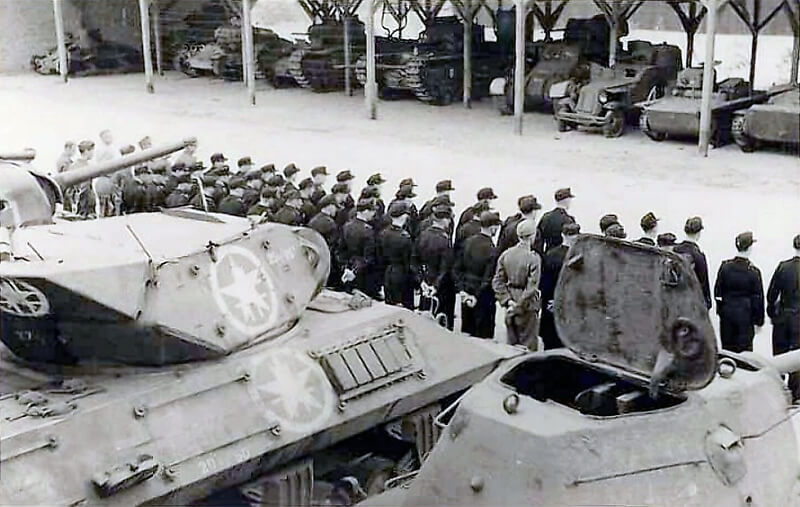
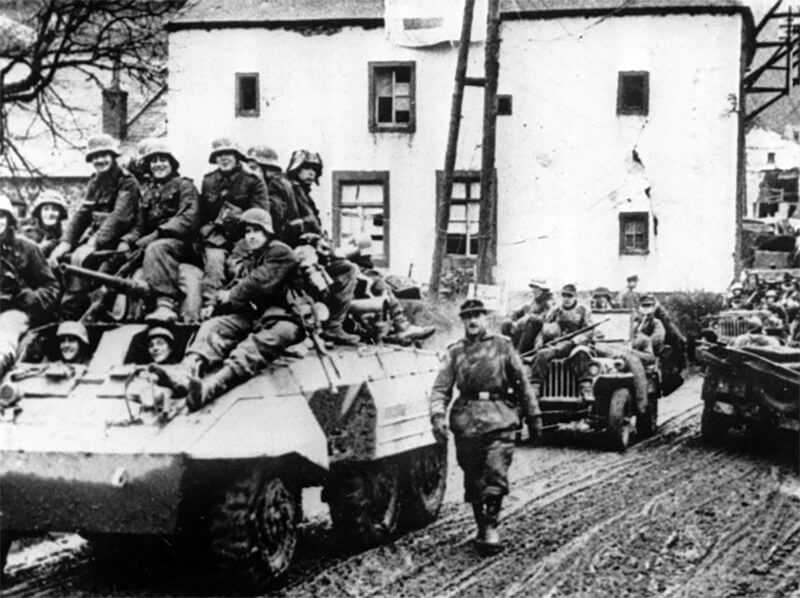

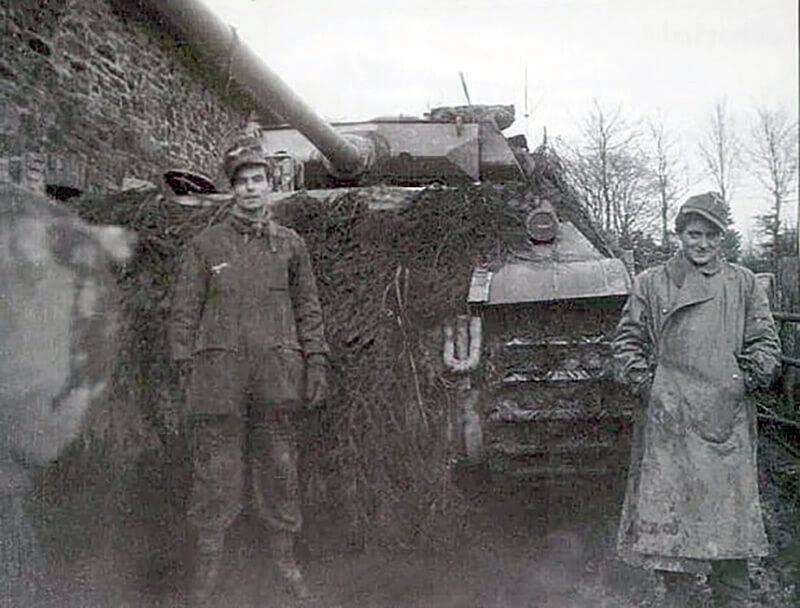

| Aftermath |
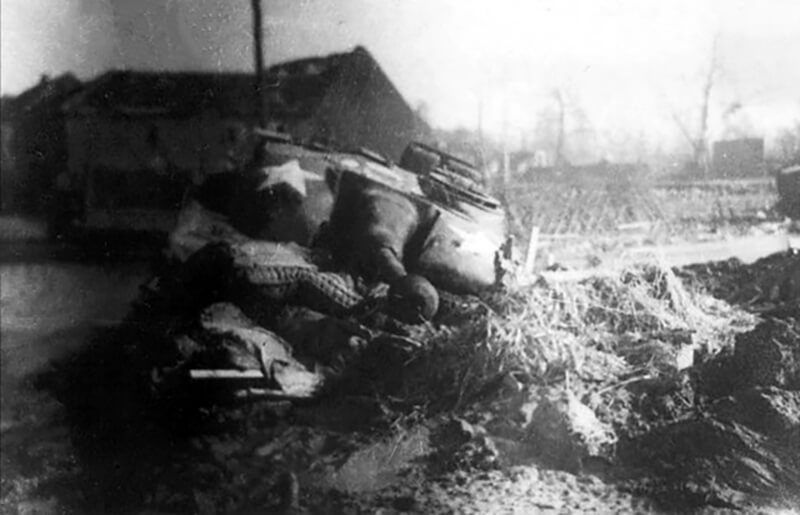
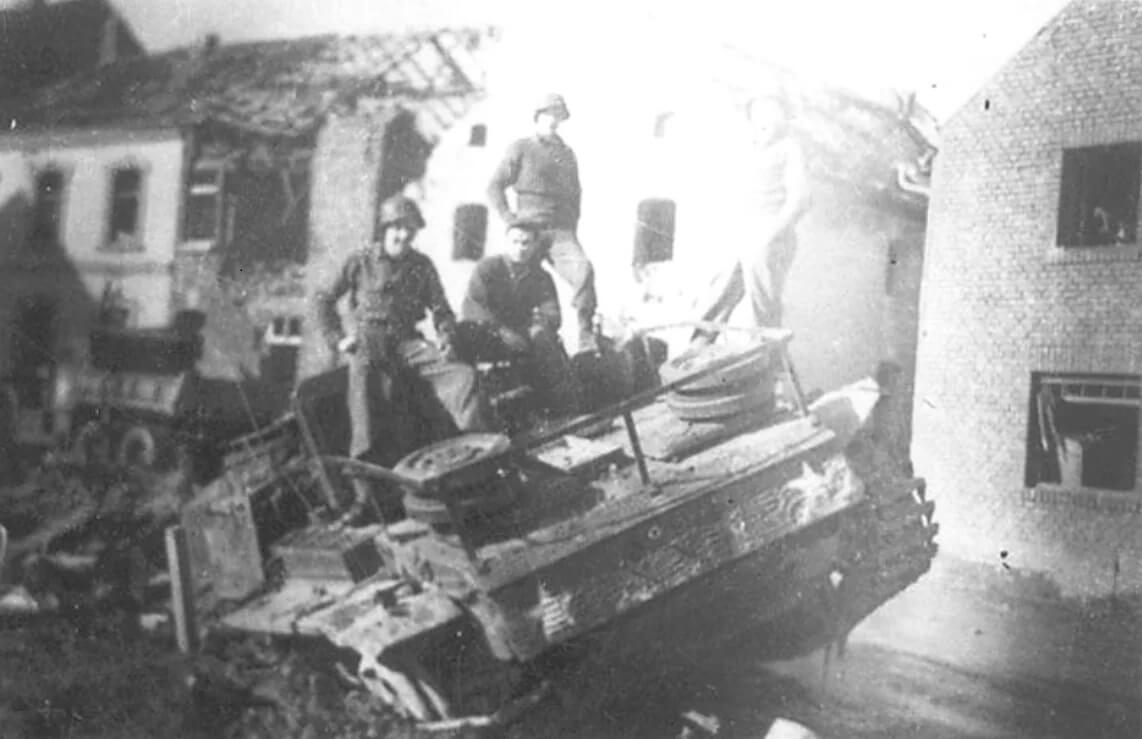

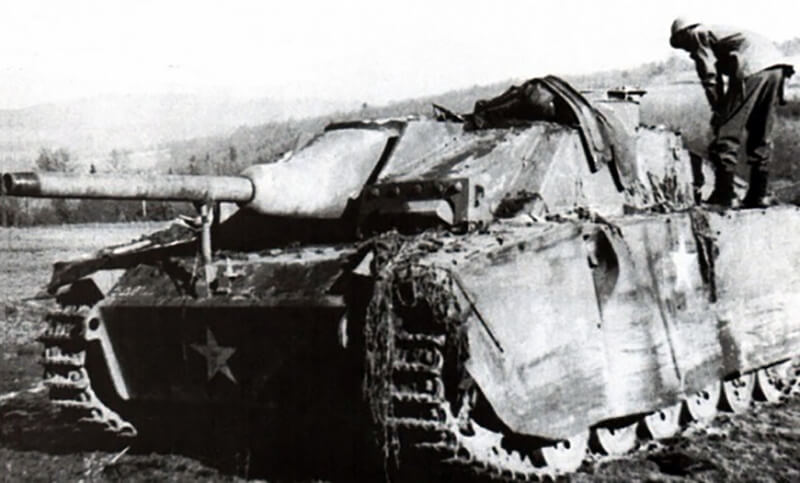
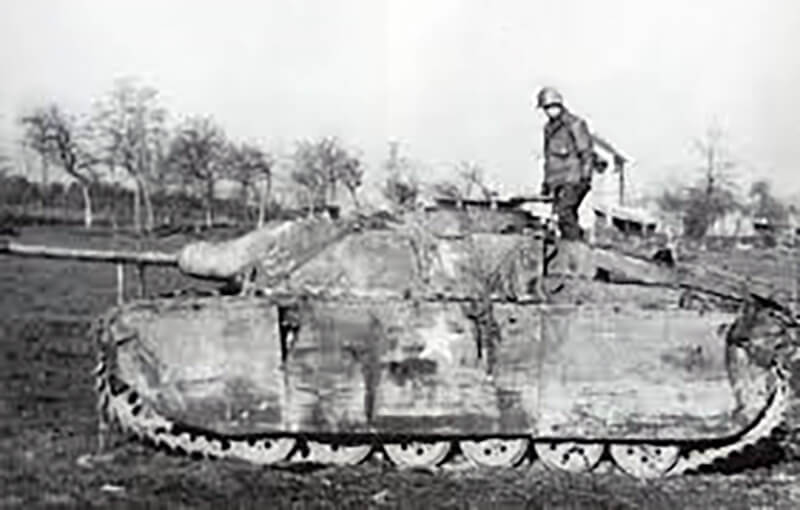
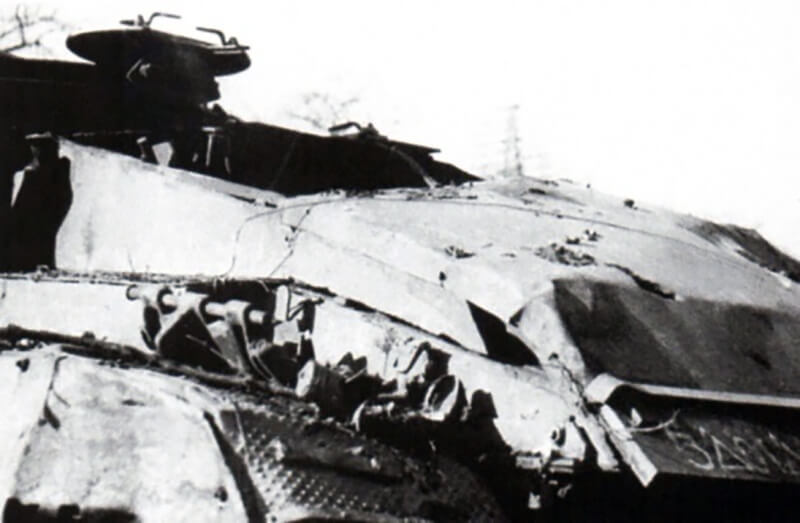
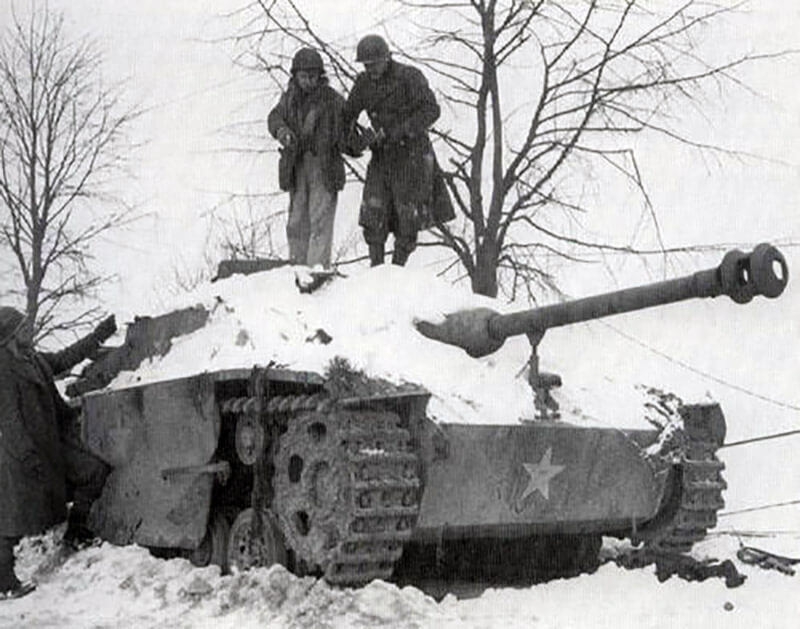
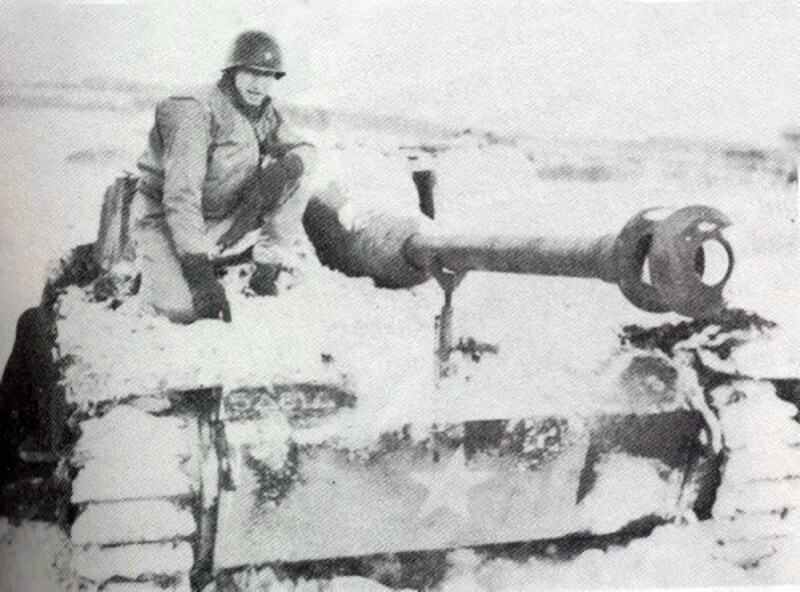
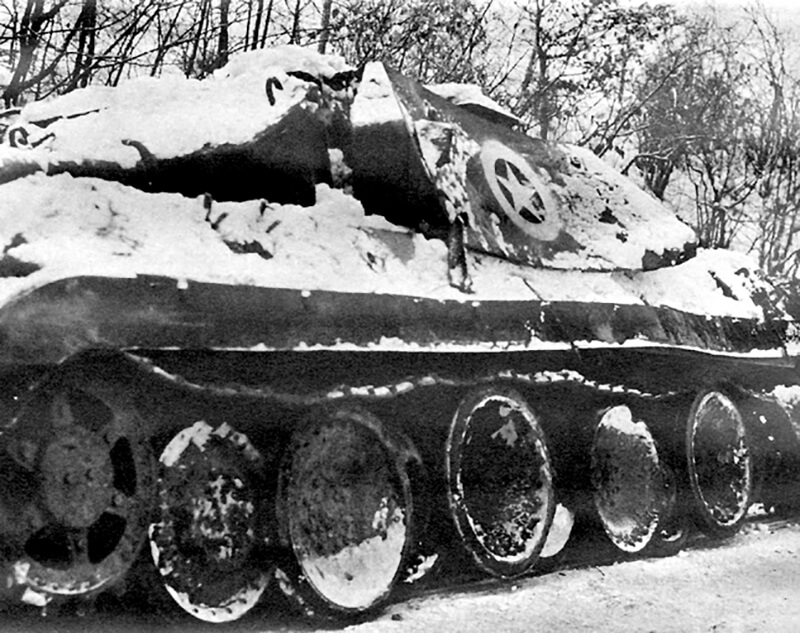
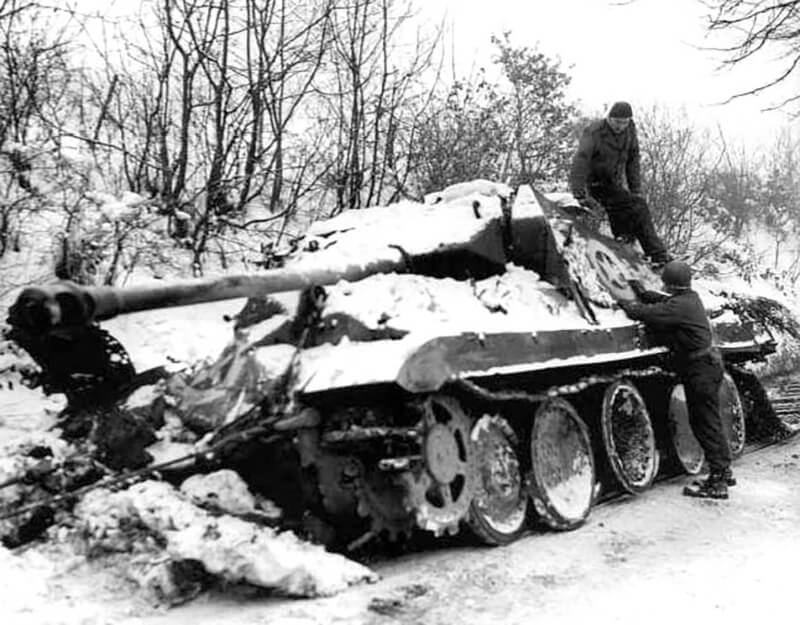

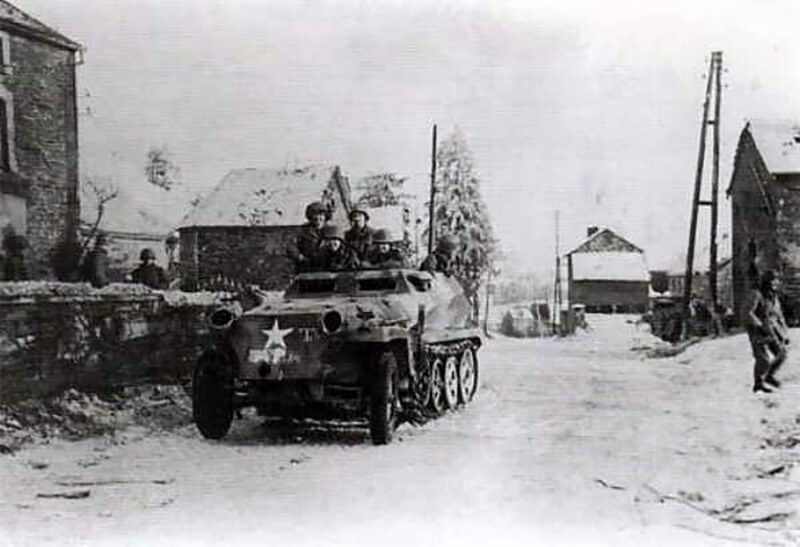
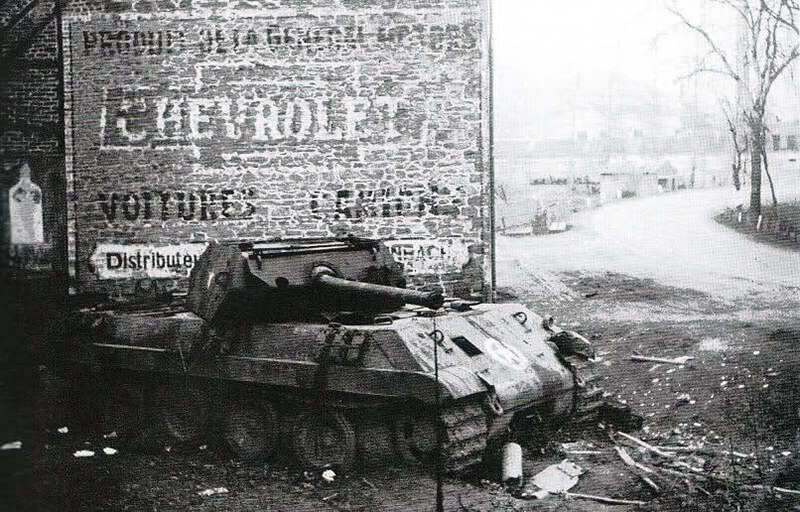
Meinhardt. He remained hidden for several days before being captured.
